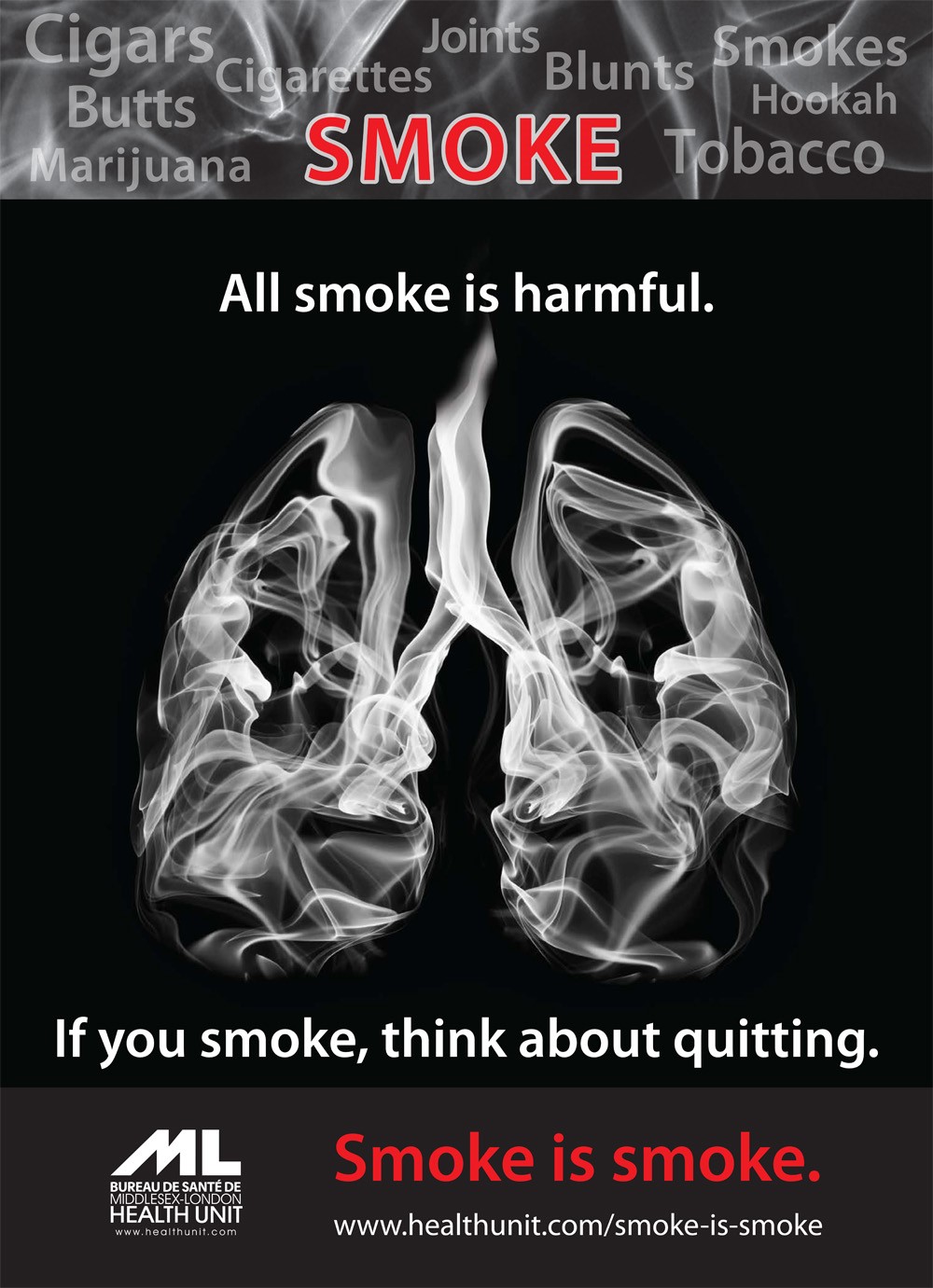Commercial tobacco is the leading cause of preventable death and illness in Canada and costs the province of Ontario $7.73 billion annually.7 The Tobacco Industry is always looking to create new tobacco products to entice youth to start using tobacco. Some of these products are regulated and permitted in Canada, while others are not. All tobacco products and tobacco exposure are harmful and can have negative health effects.
Hookah
A Hookah or waterpipe is a device used to smoke specially made tobacco and non-tobacco herbal products called shisha.1 Both tobacco and herbal shisha can produce toxic chemicals such as carbon monoxide, ultrafine particles and aldedhydes.1,2,3 However, not only does the shisha give off chemicals, but so does the burning charcoal. The charcoal used to heat the shisha produces very high levels of carbon monoxide, heavy metals and cancer causing chemicals.2,3

Tobacco Postcard (PDF)
Hookah Postcard (PDF)
Cannabis Postcard (PDF)